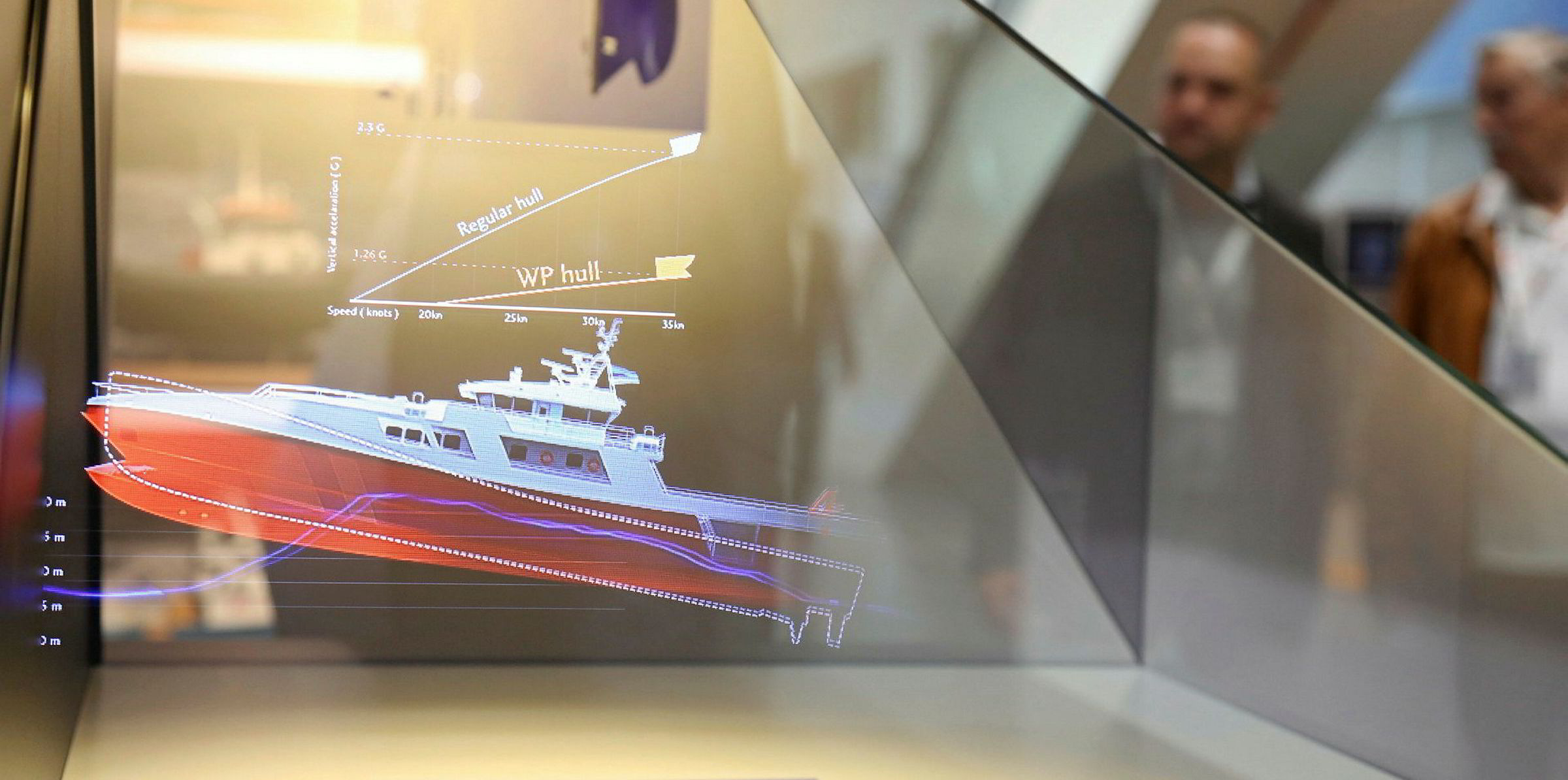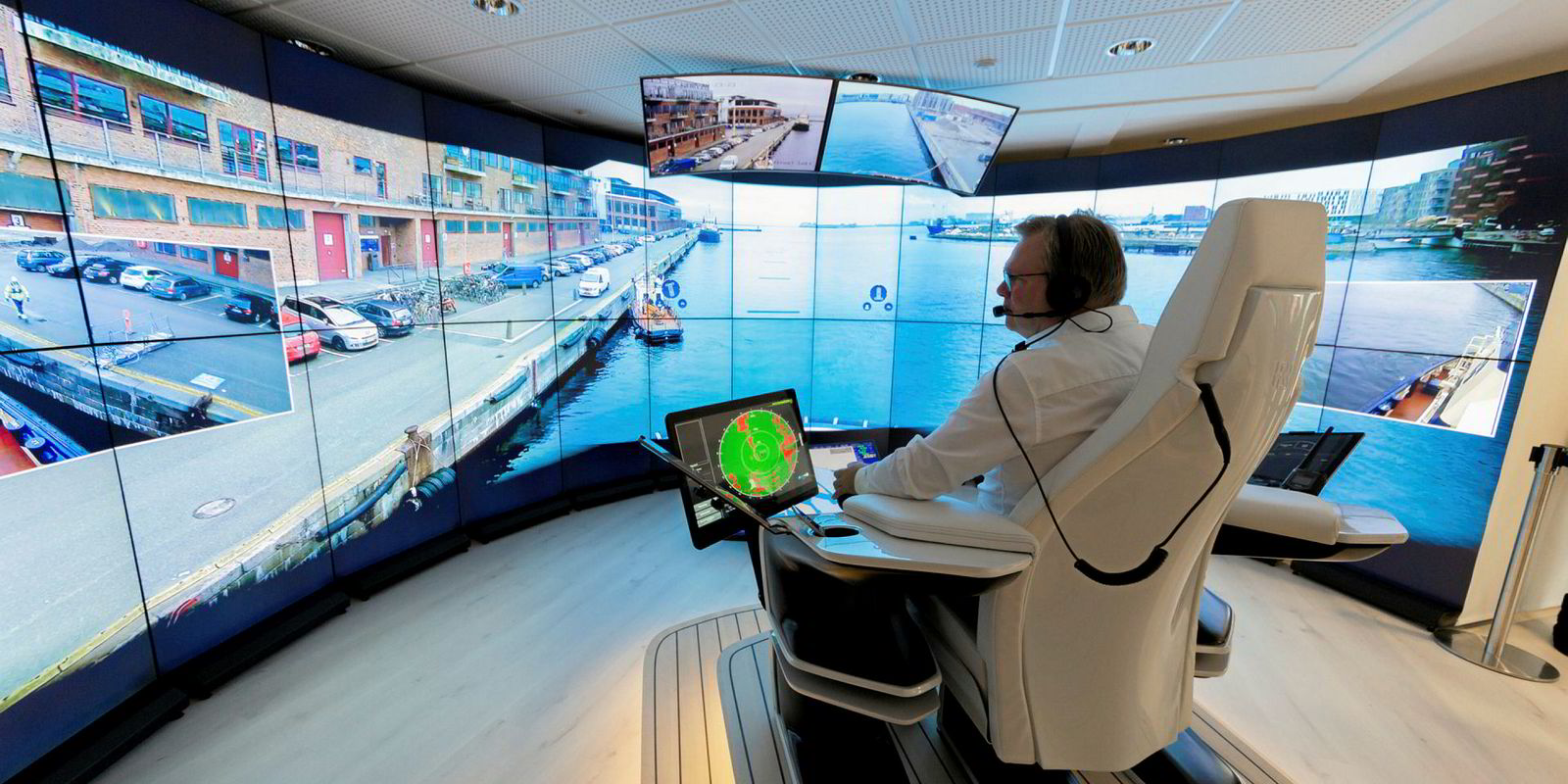The estimated 50,000 shipping professionals who are preparing to visit Hamburg next week for the huge SMM maritime technology trade fair are in for a treat.
With some 2,289 exhibitors and stands covering 93,000 square metres of the Hamburg Messe exhibition complex, it will provide a stimulating insight into the vast range of innovative products and services of all shapes and sizes on offer to shipping companies.
From digital bridge designs, drones, composite hull materials and new fuelling options, to more humble items such as pumps and chains, there will be myriad products being pushed by eager sales executives.
The event — arguably the biggest of its type in the world — will present an exciting display of opportunities presented by the application of new technologies.
It will also show the range and depth of the marine equipment market, not only globally but especially in Germany and northern Europe. The network of specialist manufacturers and digital start-ups remains extensive and creative.
Commercial landscape
But look behind the alluring sweet-shop window of apparently exciting treats, and there is a far harsher commercial landscape shaped by a sharp slowdown in newbuilding orders and intense cost pressures on shipowners and operators.
While retrofitting is a key market for some niche products, it is new vessels that continue to provide the backbone of sales.
But since the last SMM two years ago, the total orderbook has shrunk more than 20% from $278bn to $221bn, according to figures from Clarkson Research Services. It now stands at a low of just 10.4% of the current trading fleet.
And the newbuilding slowdown appears to be continuing. So far this year, just 583 vessels have been contracted, compared with 1,074 in 2017. Only the niche high-value sectors such as LNG and cruise continue to thrive.
Faced with such a squeeze on the opportunities to sell equipment for newbuildings, the upsell of new equipment to retrofit existing vessels is little better.
Despite the claimed operational efficiencies of some new technologies, shipowners and operators remain reluctant to invest without confidence in the likely payback
Despite the claimed operational efficiencies of some new technologies, shipowners and operators remain reluctant to invest without confidence in the likely payback due to the narrow financial margins they are working with.
This hesitation appears particularly acute with new digital applications, where significant benefits may only be obtained with investment in suites of new shipboard equipment across an entire trading fleet, all integrated with land-side platforms and processes.
Pressure facing marine equipment makers from this combination of circumstances has been exposed in recent months by the fate of Rolls-Royce Commercial Marine.
Despite its famous brand, products installed on around 30,000 vessels and investment in future technology, the company’s £70m losses in 2017 triggered its fire sale earlier this year to Kongsberg Gruppen.
Made in China
Meanwhile, commercial power in marine equipment continues to shift towards China. Many in the industry have overlooked that high-tech marine equipment is one of the 10 sectors included in Chinese President Xi Jinping's controversial policy, Made in China 2025.
That policy has a stated aim to hold 80% of the market by that time and is already making strides in that direction.
The former Sulzer-Wartsila Diesel low-speed, two-stroke engine maker is now wholly-owned by China State Shipbuilding Corp and named WinGD under the gnomic slogan: Simply a better different.
The business of shipping has always been shaped by the opportunities offered by the application of new technologies, just as in most industrial sectors.
Advances have offered the chance to create and exploit profitable new business niches or make asset-play moves. Those who read the market wisely have benefited, whether it was the historic shift to iron ships in the 19th century, the forced introduction of double-hulls on tankers 20 years ago or the forthcoming 2020 exhaust emission rules.
But the state of shipping today presents an intense commercial environment that is rapidly and radically shifting. Only those who can offer technology to solve practical problems at prices justified by the benefits will succeed.





